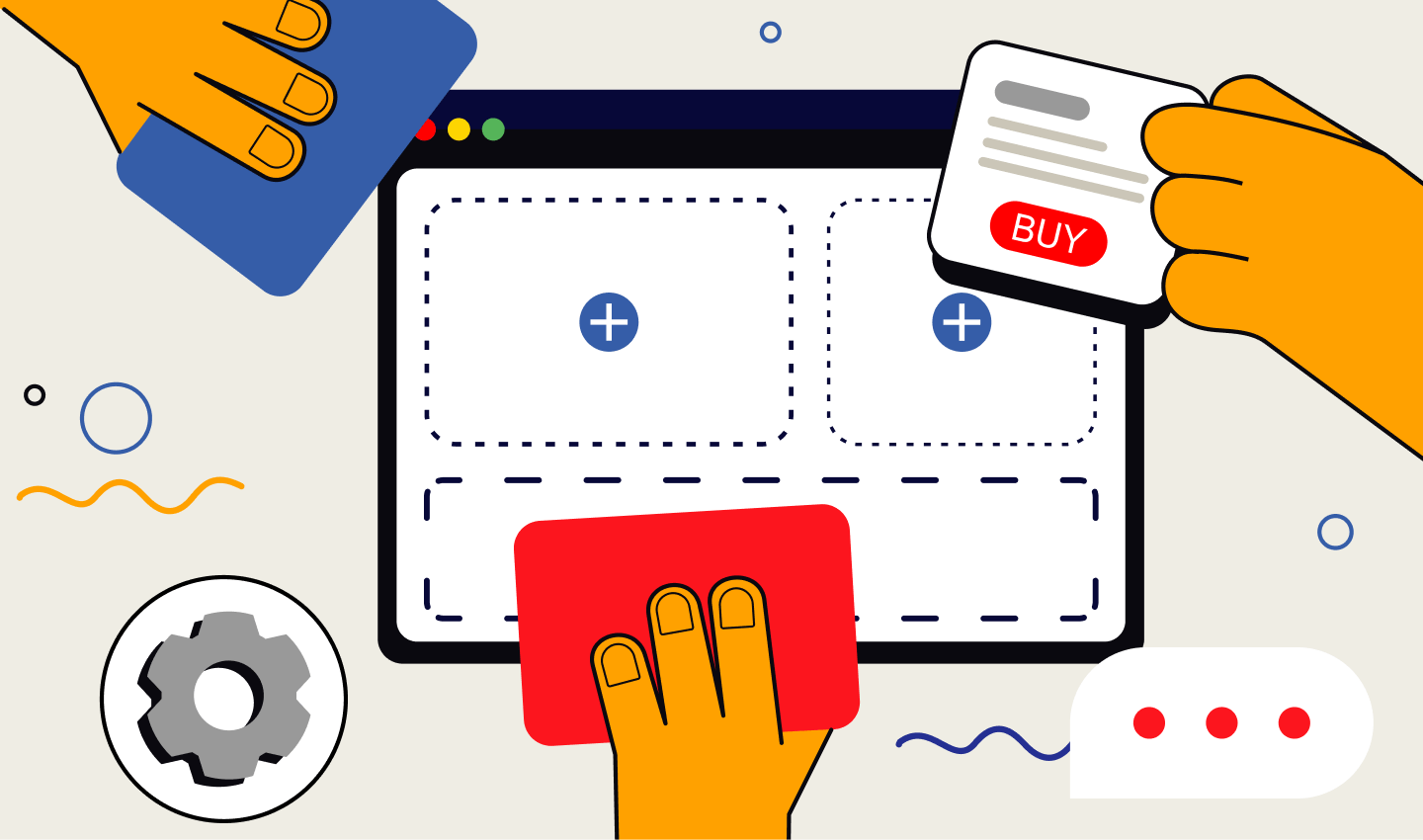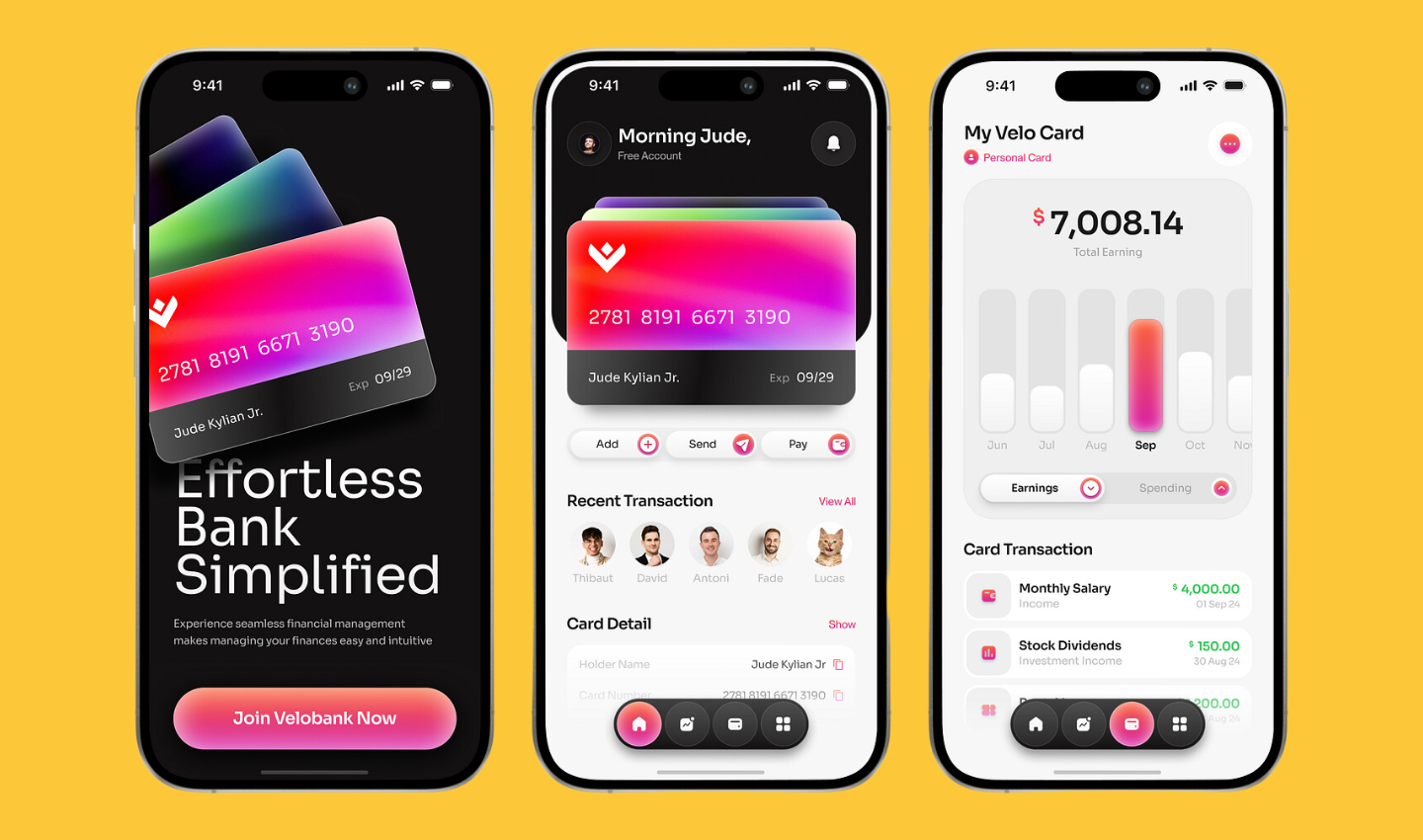
Transforming Banking UX with AI
The banking industry is experiencing a dramatic transformation as artificial intelligence (AI) revolutionizes how financial institutions deliver services and interact with their customers. In today’s fast-paced digital environment, customers expect more than just basic banking services; they demand seamless, personalized, and intuitive experiences. AI is proving to be a game-changer in fulfilling these expectations by redefining banking user experiences (UX).
This blog explores how AI is reshaping the banking industry, addressing long-standing challenges in traditional banking interfaces, and offering innovative solutions that meet the needs of a digital-first audience. We will delve into the current state of banking UX design, examine how AI is driving revolutionary changes, and provide actionable steps for banks aiming to stay ahead of the curve.
Table of Contents
Current State of Banking UX Design
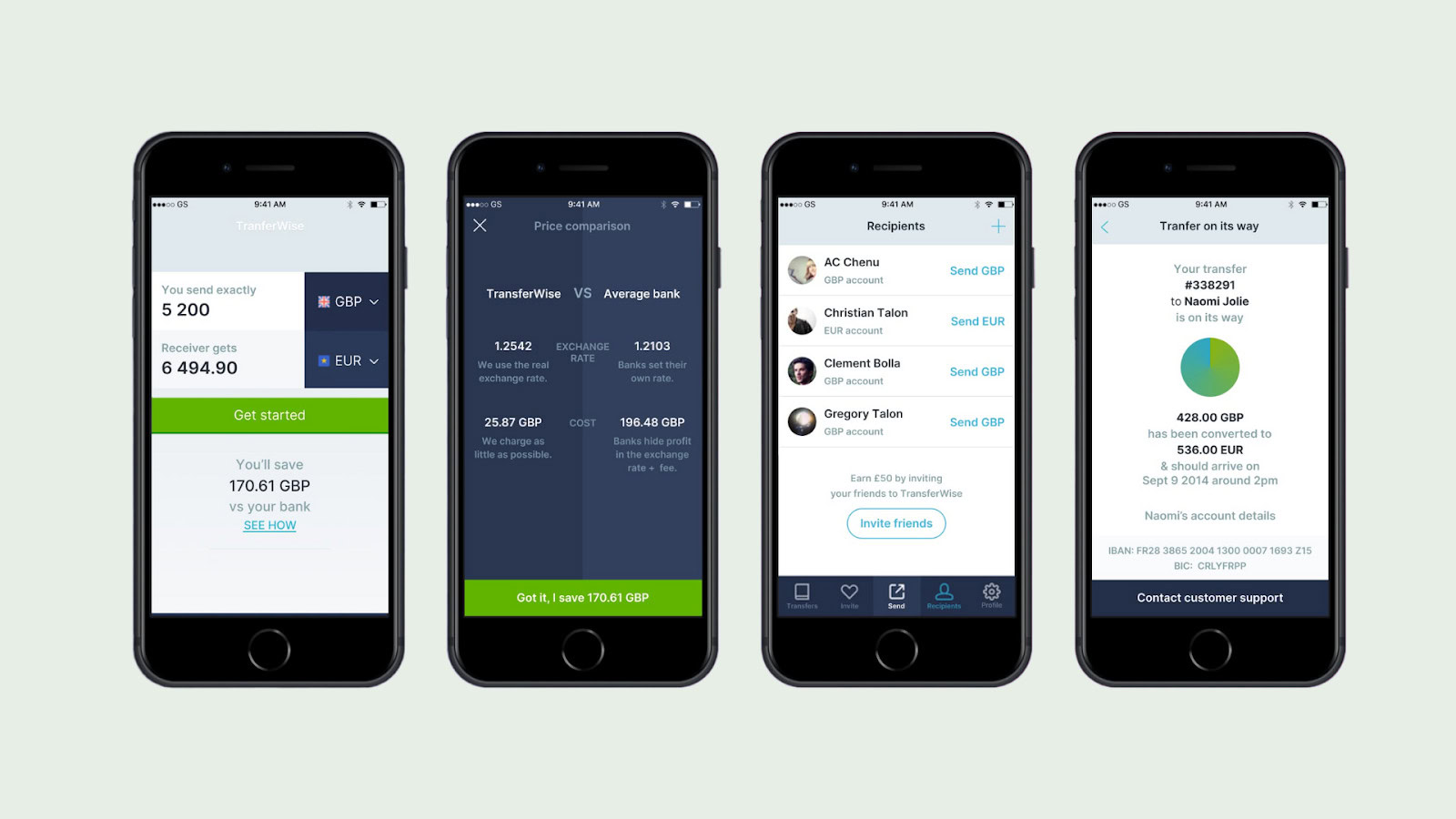
Traditional banking interfaces, often designed decades ago, struggle to meet the demands of today’s tech-savvy customers. Many systems are plagued by:
- Clunky Navigation: Outdated designs with poor navigation frustrate users, especially those unfamiliar with complex banking terminologies.
- Limited Functionality: Features like online account management or loan applications are often buried under layers of menus, making them difficult to access.
- Slow Response Times: Legacy systems lack the speed and efficiency customers have come to expect from modern apps.
As a result, users frequently turn to fintech apps that prioritize user-friendly interfaces, leaving traditional banks scrambling to keep up.
The Need for Innovation in a Digital-First World
In a digital-first world, where customers are accustomed to the effortless experiences provided by companies like Amazon and Google, banks must innovate to remain relevant. Failing to adapt risks losing customers to more agile competitors.
Banks are beginning to realize that an engaging and intuitive UX is no longer a luxury—it’s a necessity. By integrating AI into UX design, banks can:
- Predict customer needs.
- Offer hyper-personalized services.
- Create seamless and enjoyable interactions.
How AI is Revolutionizing Banking UX
Personalized Customer Experience
Personalization is no longer a luxury in digital services—it’s a necessity. In banking, AI is taking personalization to unprecedented levels by leveraging its ability to analyze vast amounts of data and extract actionable insights. This transformation enables banks to deliver experiences that align with individual customer behaviors, preferences, and financial goals.
How AI Enables Personalization
AI systems process customer data, such as transaction histories, income patterns, and spending behaviors, to predict needs and offer tailored recommendations. This goes beyond traditional banking interactions, fostering deeper trust and loyalty by ensuring each customer feels understood and valued.
Use Cases of AI in Personalized Banking
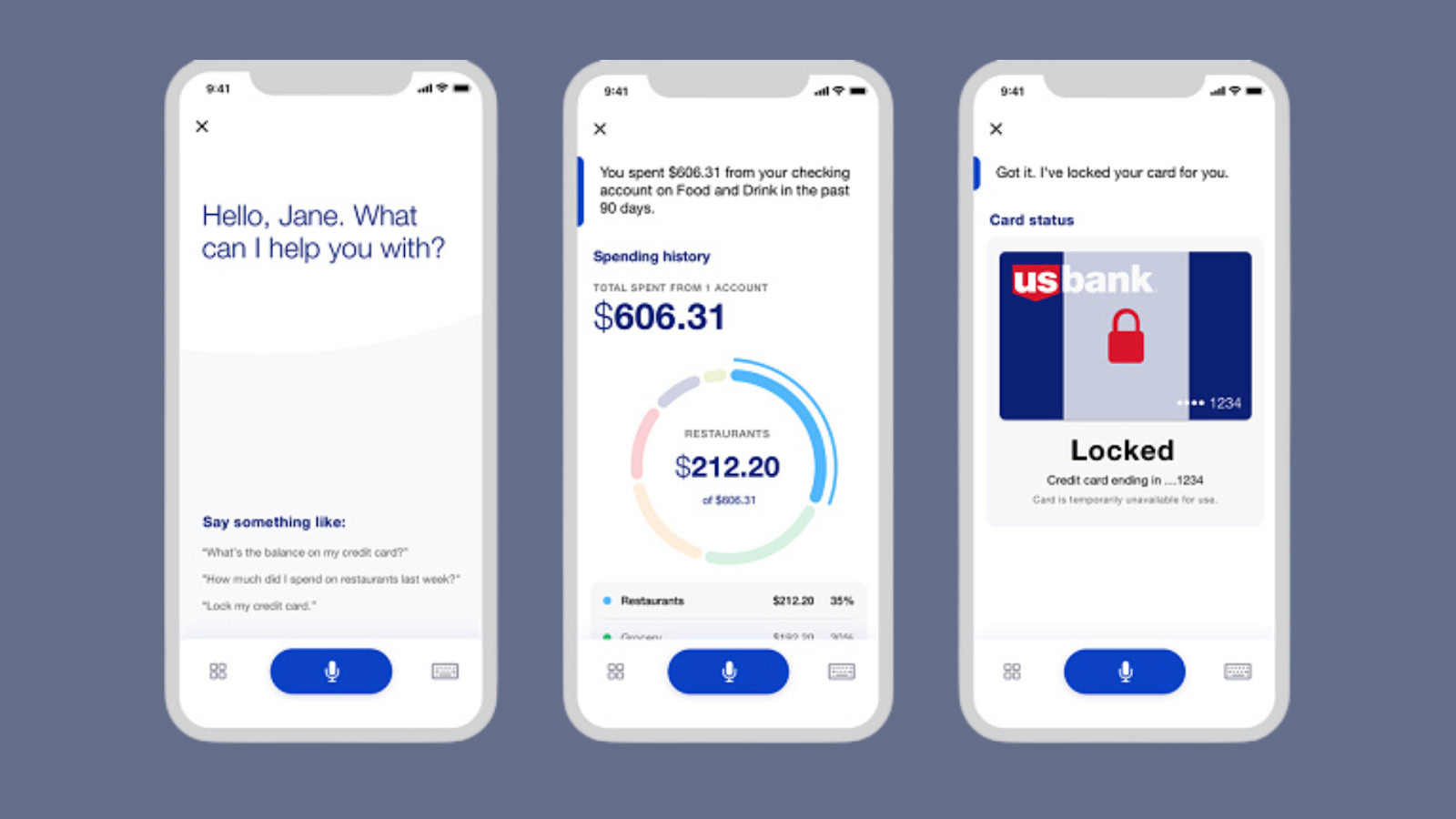
- Spending Insights and Budgeting Advice
AI-powered tools such as Mint and You Need a Budget (YNAB) provide users with real-time insights into their spending habits.- Detailed Categorization: These platforms categorize transactions (e.g., groceries, entertainment, utilities) to help users track their expenditures.
- Proactive Alerts: Users receive notifications when they approach or exceed their set budgets. For example, an AI system might alert a customer, “You’ve spent 85% of your entertainment budget this month.”
- Long-Term Goals: AI doesn’t just monitor; it motivates. For instance, if a user wants to save for a vacation, the system can suggest a customized savings plan based on current spending patterns.
- Custom Product Recommendations
AI takes the guesswork out of choosing financial products by analyzing individual customer profiles.- Credit Cards and Loans: For a young professional with limited credit history, an AI system might recommend a starter credit card or a low-interest personal loan.
- Investment Products: Based on a customer’s risk appetite and financial goals, the AI might suggest mutual funds, ETFs, or robo-advisory services tailored to their needs.
- Insurance: By assessing spending habits, income, and familial obligations, AI can recommend optimal insurance plans, ensuring customers aren’t overinsured or underinsured.
AI Chatbots and Virtual Assistants
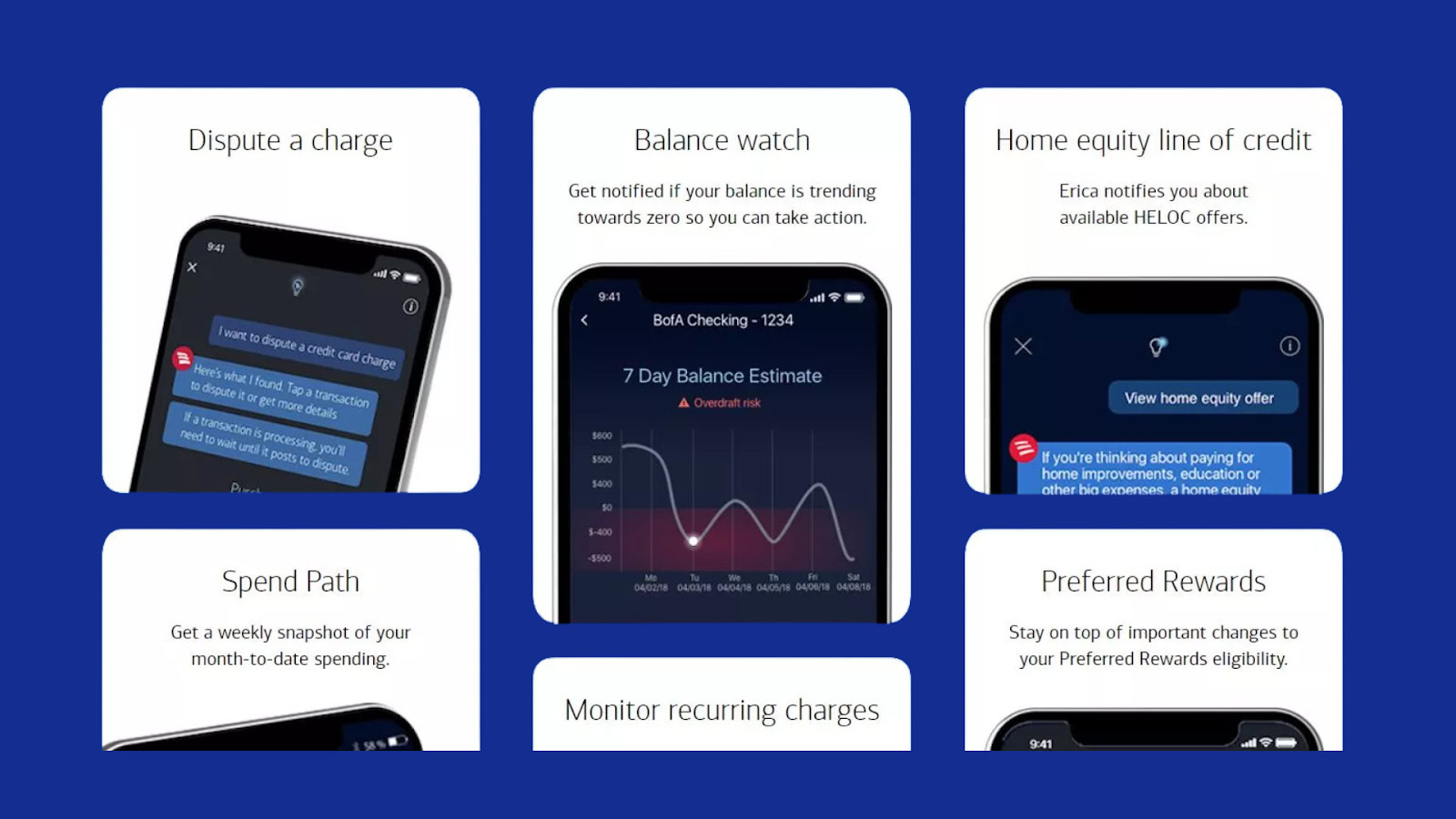
Customer support has traditionally been a pain point for banks, with long wait times and limited availability. AI-powered chatbots and virtual assistants are changing this by offering instant, 24/7 assistance.
Key Benefits:
- Improved Accessibility: Chatbots handle a wide range of queries, from account balances to transaction details, without requiring human intervention.
- Faster Resolutions: Virtual assistants like Bank of America’s Erica use AI to provide quick answers and suggest next steps.
- Proactive Support: These tools can alert users about potential overdrafts, suggest savings plans, or notify them of unusual account activity.
With AI-driven support, banks can improve customer satisfaction while significantly reducing operational costs.
AI-Driven Features Enhancing Banking UX
Voice and Facial Recognition
Security is a cornerstone of banking, and AI has introduced innovative ways to enhance it without compromising user experience. Biometric authentication, such as voice and facial recognition, provides a seamless yet secure way for users to access their accounts.
Real-World Applications:
- Apple Pay: Enables users to authenticate transactions using Face ID, combining convenience with robust security.
- Voice Authentication: Banks like Citibank use voice biometrics, allowing users to access accounts or perform transactions via phone calls without additional passwords.
These features not only make banking more secure but also eliminate friction, enhancing the overall user experience.

Predictive Analytics
Predictive analytics powered by AI helps customers make informed financial decisions by analyzing their spending patterns, income, and goals.
Examples:
- Proactive Alerts: Apps like Cleo send real-time notifications if a user is at risk of overspending or overdrafting.
- Savings Suggestions: AI models can analyze cash flow and recommend optimal times to save or invest, empowering customers to build their financial futures.
Fraud Detection and Prevention
Fraud prevention has always been a challenge for banks, but AI is making it significantly more effective. Advanced algorithms monitor transactions in real time to identify unusual patterns or anomalies, enabling immediate action.
Benefits:
- Real-Time Alerts: Customers are notified instantly of suspicious activities, minimizing potential losses.
- Increased Trust: Visible measures to prevent fraud reassure customers, strengthening their trust in the bank.
Benefits of AI Integration in Banking UX
The integration of AI in banking UX offers a host of benefits for both customers and financial institutions:
1. Improved Efficiency
AI streamlines processes, allowing users to complete tasks like applying for loans or opening accounts in minutes rather than hours. This efficiency reduces frustration and encourages customer loyalty.
2. Enhanced Personalization
Tailored services and proactive recommendations create a sense of connection between the bank and its customers, leading to increased satisfaction and retention rates.
3. Cost Reduction
Automation reduces the reliance on human customer service agents, cutting operational costs while maintaining high levels of service quality.
4. Increased Accessibility
AI-powered features such as voice controls and text-to-speech functionality make banking more inclusive, catering to customers with disabilities or those who prefer non-traditional interfaces.
Challenges and Considerations
While the benefits are compelling, integrating AI into banking UX also presents challenges:
Data Privacy Concerns
AI relies on collecting and analyzing user data, raising concerns about privacy and security. Banks must:
- Implement robust Encryption: Protect sensitive customer information from breaches.
- Comply with Regulations: Adhere to laws like GDPR to maintain trust.
Balancing Automation with Human Touch
Although AI can handle many tasks, certain situations—like resolving complex disputes—require human empathy and understanding. Banks need to strike a balance to ensure customers feel valued.
Case Studies: Successful AI Integration in Banking UX
Case Study 1: Capital One’s Eno
Capital One’s Eno represents a prime example of how AI can redefine customer interactions in the banking industry. Introduced as a proactive and intelligent chatbot, Eno is much more than a basic customer support tool. It serves as a personal financial assistant that monitors user accounts in real time and provides actionable insights to ensure seamless banking experiences.
Key Features and Functionalities:
- Proactive Alerts: Eno notifies users of potential issues like duplicate charges or unusual spending activity. For example, if a customer is billed twice for a single transaction, Eno immediately flags it, saving the user from having to comb through their statements manually.
- Bill Payment Reminders: By analyzing account activity and due dates, Eno reminds users about upcoming bills, helping them avoid late fees and maintain a healthy credit score.
- Low Balance Warnings: Eno tracks account balances and provides alerts when funds dip below a certain threshold, empowering users to manage their finances more effectively.
- Conversational Interface: Unlike traditional banking interfaces, Eno offers a conversational and intuitive experience. Customers can ask questions or make inquiries in natural language, such as, “How much did I spend on groceries last month?” or “Do I have any suspicious transactions?”
Impact on User Experience:
- Enhanced Accessibility: Eno’s 24/7 availability ensures that users have access to support and insights whenever they need them, reducing reliance on customer service representatives.
- Building Trust: By proactively addressing financial issues, Eno demonstrates that Capital One is invested in its customers’ financial well-being. This builds stronger relationships and fosters loyalty.
- Effortless Problem-Solving: Customers can resolve many issues directly within the app, reducing the frustration of navigating lengthy processes or waiting on hold for customer service.
Eno’s success showcases how AI-driven chatbots can transform banking UX by combining efficiency with a human-like, conversational approach.
Case Study 2: HSBC’s Biometric Authentication
HSBC has taken significant steps in modernizing its user experience by integrating biometric authentication technologies like voice recognition and facial recognition. These innovations address two critical aspects of banking: security and convenience.
Key Features of HSBC’s Biometric Solutions:
- Voice Authentication: HSBC’s voice recognition system identifies customers based on unique vocal patterns. Customers can access their accounts or authorize transactions simply by speaking, eliminating the need for passwords or PINs.
- Example: If a customer calls the bank’s helpline, the system verifies their identity during the conversation, allowing immediate access to their account.
- Facial Recognition: Leveraging advanced AI algorithms, HSBC enables customers to log into mobile banking apps using their face. This method combines convenience with enhanced security since facial biometrics are harder to replicate than traditional credentials.
- Multi-Layered Security: HSBC’s biometric systems are backed by robust encryption and fraud detection measures, ensuring that even in the unlikely event of a data breach, customer information remains secure.
Impact on User Experience:
- Streamlined Access: Biometric authentication eliminates the hassle of remembering multiple passwords or answering security questions, making banking faster and more convenient.
- Increased Confidence: Customers trust HSBC more because of the bank’s commitment to using cutting-edge security measures to protect their accounts.
- Accessibility for All: Features like voice authentication are especially beneficial for customers with disabilities, providing an inclusive banking experience.
Practical Steps for Banks to Integrate AI in UX Design
For banks looking to implement AI in their UX strategy, the following steps can serve as a roadmap:
- Identify Pain Points: Use customer surveys and data analytics to determine areas where AI can add value.
- Invest in Technology: Partner with AI solution providers to integrate advanced tools into existing systems.
- Prioritize Security: Build trust by ensuring that all AI implementations comply with strict data protection standards.
- Adopt an Agile Approach: Continuously test, learn, and iterate based on customer feedback to refine AI-driven features.
- Educate Customers: Offer tutorials, FAQs, and demos to help users understand and embrace new AI-powered functionalities.
Conclusion
AI is transforming the banking industry by redefining how customers interact with financial institutions. From personalized recommendations and proactive fraud detection to seamless biometric authentication, AI is setting a new standard for banking UX.
Banks that embrace this technology can gain a competitive edge, building deeper customer trust and loyalty while streamlining operations. As the digital landscape continues to evolve, adopting AI will not just be an option for banks—it will be an imperative.
The future of banking lies in innovation. Now is the time for institutions to invest in AI-powered UX to meet and exceed customer expectations, ensuring a bright and competitive future in the financial sector.
Take your company to the next level and get results with our world class user experience, interface design and implementation.
Get a FREE 30 min Strategy Session

Related posts
7 UX Tips for eCommerce to Increase Conversions
UX has a pivotal role to play in increasing revenue. It is usually an overlooked aspect of the checkout process, […]
Threads Unraveled: How UX Flaws Weakened a Promising Social Platform
Threads emerged as a social media platform brimming with promise. Its unique focus on threaded messaging and ephemeral content aimed […]
Data Analytics in Design: 4 Great Approaches from Airbnb, Netflix, Amazon and Spotify
From personalising a user’s experience to mitigating risk, data analytics are invaluable when making big business decisions that lead to […]
Creative product design that gets results
Take your company to the next level with world class user experience and interface design.
get a free strategy session

